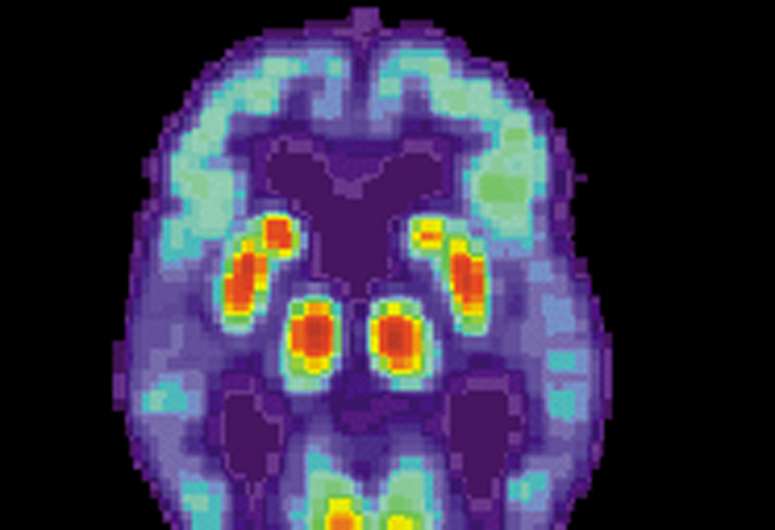
Subjective memory disorders in conjunction with conspicuous levels of beta-amyloid proteins in the cerebrospinal fluid are a strong indication of developing Alzheimer’s disease. This is the conclusion of a DZNE study involving about 1,000 older adults. A team led by dementia researcher Frank Jessen reports on these findings in the journal Alzheimer’s & Dementia. The study results could contribute to the early detection and treatment of Alzheimer’s disease.
When people feel that their memory or other mental abilities are declining, but objective tests do not reveal any deterioration, this is referred to in medicine as “subjective cognitive impairment,” or SCD for short. The phenomenon has been a topic of research for several years.
“The affected individuals report cognitive problems that cause them serious concern, but which are not measurable with current techniques,” explains Prof. Frank Jessen, a DZNE scientist and director of the Department of Psychiatry at University of Cologne. By now it has turned out that SCD is a risk factor, but not a conclusive warning sign for upcoming dementia. “In many individuals with SCD, there is no progressive loss of cognitive performance. To assess the individual risk more accurately, other factors have to be taken into account,” the researcher says. “We have now been able to specify these. If, in addition to SCD, there is also evidence that certain proteins accumulate in the brain, then taken together that’s a strong sign for a developing Alzheimer’s disease.”
A nationwide study
This assessment is based on a long-term DZNE study called DELCODE, which comprises ten study centers across Germany and involves several university hospitals. Within this framework, cognitive performance of almost 1,000 older women and men has been recorded annually since several years. This is done by means of established neuropsychological test procedures. In addition, the cerebrospinal fluid of many study participants is analyzed and brain volume determined by means of magnetic resonance imaging (MRI).
Jessen and his colleagues now evaluated measurement series of the individual subjects, each data set covered a period of up to five years. Mean age of the study participants was around 70 years, and they were originally recruited through memory clinics at the participating university hospitals and through newspaper advertisements. The cohort included more than 400 people with SCD at baseline and around 300 individuals who had measurable cognitive impairments—up to symptoms of dementia due to Alzheimer’s disease. In addition, the cohort comprised more than 200 adults whose cognitive performance was within the normal range and who did not exhibit SCD at baseline: These “healthy” persons served as a control group. All in all, this represents one of the most comprehensive studies on SCD to date.
Biomarkers in the cerebrospinal fluid
The protein beta-amyloid, which accumulates in the brain in the course of Alzheimer’s disease, played an important role in the investigations. Accumulation in the brain can be assessed indirectly—on the basis of the level of the protein in the cerebrospinal fluid: if the reading is beyond a threshold value, this is regarded as evidence that beta-amyloid is concentrating in the brain. These individuals are then considered “amyloid-positive.” 83 study participants with SCD and 25 volunteers from the control group had this status. “Deposition of beta-amyloid, like SCD, is a risk factor for Alzheimer’s disease. On their own, however, neither phenomenon is a clear indicator of disease. But the picture sharpens, as evidenced by our study, when these phenomena are considered together and over a longer time period,” Jessen says.
Development over time
During the study period, some subjects from the SCD group and also some from the control group evolved measurable cognitive deficits. This was particularly evident in amyloid-positive subjects with SCD at baseline. In comparison, cognitive decline was much on average much lower in amyloid-positive individuals of the control group. MRI data of the brain also showed differences: The “hippocampus,” a brain area divided over both brain hemispheres and considered the “control center” of memory, tended to be smaller in amyloid-positive subjects with SCD than in amyloid-positive individuals of the control group: an indication of atrophy, i.e. loss of brain mass.
Stage 2 of Alzheimer’s disease
“When you add up all the findings, including the data from those subjects who already had measurable cognitive deficits at baseline, we see the combination of SCD and amyloid-positive status as a strong indicator of early-stage Alzheimer’s disease,” Jessen says. “If you classify Alzheimer’s into six stages according to common practice, with stage 6 representing severe dementia, then, in our view, the combination of SCD and amyloid-positive status corresponds to stage 2. This occurs before the stage where measurable symptoms first appear and which is also referred to as mild cognitive impairment.”
An approach for early detection
Source: Read Full Article
